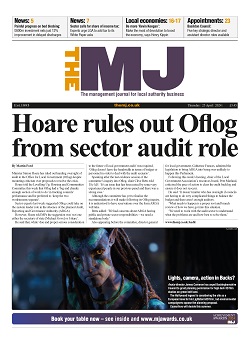So stripping away all the flim-flam and money for church roofs in the Budget what does it actually mean for local government and the public sector?
For this answer I consign the Budget document to the online filing cabinet and turn instead to the Office for Budget Responsibility’s (OBR) own report, which was published at the same time.
The OBR says the Budget is not expected to have ‘any material effect’ on the economy.
However, it’s a different story for the public finances.
It predicts a ‘roller coaster profile for implied public services spending through the next Parliament’ because of a much tighter squeeze on spending in the years to 2019 - in fact, bigger than anything seen in the past five years - followed by the ‘biggest increase in real spending for a decade in 2019/20’ (curiously the time of the next general election).
Under the Government’s plans, by 2019/20 public spending as a percentage of GDP falls to 36%, marginally higher than the post-war low of 35.8% in 1957/8 and 35.9% in 1999/2000.
The Government envisages that borrowing is lower every year to 2018/19 than in the OBR’s last forecast, that the new fiscal mandate is met with room to spare in 2017-18, public spending as a share of GDP no longer falls to a post-war low in 2019-20 and that the debt-to-GDP ratio falls a year earlier in 2015-16.
The OBR reckons that public sector net borrowing has now fallen to 5% of GDP, half that what it was in 2009/2010, when it peaked at a post-war record of 10.2% and is forecast to fall to minus 0.3% by 2020, a total of £172bn.
However, only half of that planned reduction has so far been completed with the burden of cuts falling on welfare and what the OBR calls ‘day-to-day spending on public services and administration’, the latter of which implies cuts of £65bn or 70% of the total improvement in the public finances.
Public sector net debt peaks this year, then declines to 71.6% of GDP by 2019/20.
Total managed expenditure for 2015/16 will be £743bn, of which health is £141bn and education £99bn.
Of revenue of £667bn, income tax makes up £170bn, VAT £131bn, National Insurance £113bn and council tax and business rate together £56bn.




